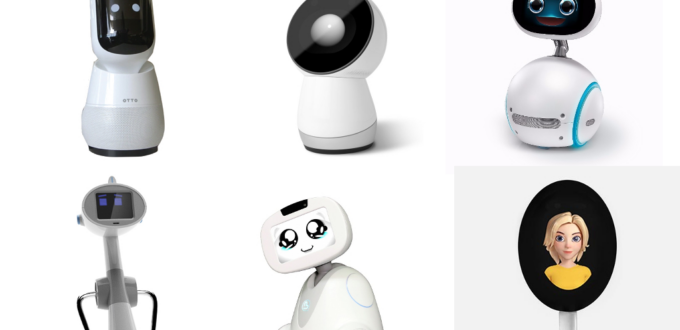Are we entering the time for robots to be common place in our homes?
There are several personal robots being released over the next few years, some are table top interactive devices, while others are autonomous mobile assistants. You might think, there have been many robots on the market that consumers could buy since the 1970s and it never became a phenomenon to be in every home, what is different now?
Many of the robots that came before were either too expensive or did not have adequate practical functionality. Some of the built in sequences were either too simple or it had to be programmed entirely by the user, which is candy for the tech nerds but not for the average consumer. Now things are changing. The personal robots scheduled to be released over the next few years are fully preprogrammed with adaptive software and the prices on some of these machines are low enough that the average consumer can afford.
Robots for the home are developing in two different directions:
Domestic Robots are generally simpler purpose built robotic devices such as; vacuum cleaners, sweepers, lawnmowers, pool cleaners, etc. that operate autonomously to do a specific task. This path has already reached a level of success. These single purpose devices are much more efficient to develop and implement than it is for instance, to make a robot use a vacuum cleaner designed for a human.
Personal Robots are generally voice controlled interactive robotic assistants designed for several tasks. These devices will have some level of artificial intelligence, with more emphasis on social media and can assist you with the information you need throughout your day.
What will these personal robots do for us?
They will be able to wake you up in the morning, remind you of appointments throughout the day, order your meals from your favorite takeout, connect with your friends and entertain you. New facial recognition algorithms are able to tell what mood you are in and adapt to your behaviors or some may be sophisticated enough to be able to tell if everyone is in frame and smiling before it takes a photo. Children will quickly adapt to the interactive games, educational software and they will love the interactive storytelling.
You will be able to remotely connect to the live camera with your cell phone to view the room it is in or have the robot move around your house autonomously and alert you of any unusual events for home security. Some may be able to monitor and control smart appliances and control the temperature in your home to save energy.
Personal robots can provide entertainment, social networking, telepresence, voice controlled web searching and be your music player, fitness tracker, kitchen helper and the list goes on. Just as with most popular computerized devices, an entire industry of programs and apps will grow around it, so you might be able to download and add extra features.
The appearance and size of a robot will have an effect on potential buyers. A small cute robot will appeal to families with young children, which in itself is a huge market but it might not appeal to the average adult. Several form factors and styles will have to be made available to the public in order for everyone to adopt the idea. A robot with a larger more practical design with modular construction might appeal to more adults and the modular format might give consumers options to add extra features and customization.
Some people might be hesitant to accept robots in their homes but several manufacturers are promoting their robots as a tool or assistant and not as a novelty item, this might curve public opinion. It was just a short time ago you would have believed smart appliances would be just a novelty item, now they are common place in many homes. Is a personal robot the next step for us? The direction of robots in the home is uncertain but science fiction has a strange habit of becoming reality.

